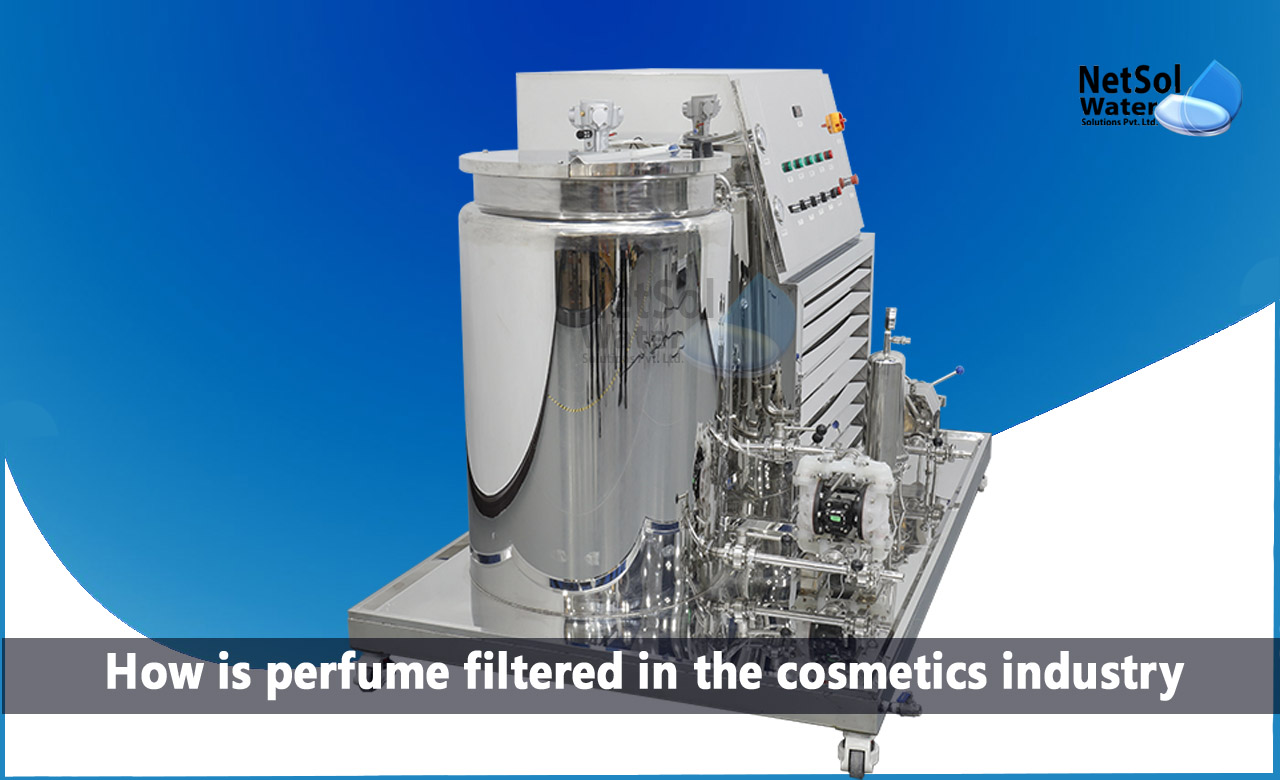The ingredients used to create perfume include water, essential retention agents, pigments, and fragrances from plants, animals, and synthetic materials that have been dissolved in alcohol. The steps in the perfume-making process are essential oil extraction, pretreatment, mixing, ageing, chilling, filtration, colour mixing, production inspection, and bottling.
Let’s see the steps of perfume making and its filtration and water purification.
How is perfume filtered in the cosmetics industry?
1. Obtaining essential oil
The primary techniques for extracting essential oils include vacuum refining, volatile solvent refining, pressing, distillation, and oil suction. The primary goal is to get essential oils from synthetic, animal, and vegetable fragrances for use in perfume production.
2. Pre-treatment
The pretreatment step in the manufacture of perfume mostly involves treating the alcohol, fragrance, and water to make the finished product look clearer and smell more pleasant.
The alcohol must be filtered and passivated, the flavour must be added to a tiny amount of alcohol that has already been treated and aged for a month, and the water must be distilled to remove metal ions and purified using RO Plants, and sterilize it.
3. Blending
Pour alcohol, flavour, and water into a stainless steel container in a certain ratio. Stir and combine for a while to allow the flavour impurities to fully precipitate, which will increase the finished product's clarity and capacity, to withstand turbidity in cold temperatures.
4. Ageing
Place the perfume mixture for ageing in a container that is closed and has a safety valve. Physical methods such as mechanical churning, ultrasonic treatment, ultraviolet light irradiation, etc., and chemical procedures are the two main categories used to categorise the ageing of scent. Its major function is to subdue the perfume's fragrance.
5. Cooling
The finished perfume will be chilled during the production process to prevent transparent, or foggy perfume in the winter. The pollutants in the perfume will then be kept through filtration, to ensure the clarity of the scent.
6. Filtration
A filtration system must be constructed to eliminate the impurities that have precipitated in the perfume, because ageing and freezing will cause some insoluble substances to do so, preventing the perfume from being clear and transparent.
7. Color blending and production oversight
The colour of the scent must be checked to the standard sample before toning, which comes after the filtering system has processed it. After that, the product is inspected, which often entails using tools to compare colours, determining the specific gravity meter's refractive index, determining the alcohol content using standard techniques, etc.
8. Bottling
In order to prevent the perfume solution from heating up and expanding during storage and breaking the bottle, the bottle should be cleansed with distilled water before being filled with perfume. Gaps should also be left at the neck of the bottle.
Do you want a RO Plant for your perfume production industries?
A production facility where the reverse osmosis process is carried out is known as a reverse osmosis plant, by pushing water through a semi-permeable membrane. A range of pre-treatment techniques, including softening, de-chlorination, and antiscalant treatment, are necessary for the RO Water plant, to get more clear water.
Choose the best providers of water treatment plants in India!
At Netsol Water, we are committed to providing high-performing water and wastewater treatment systems, to assist commercial and industrial enterprises with their treatment requirements. We have earned a reputation for providing top-notch service and water treatment solutions, which will help our clients lower operating expenses and increase the life of their equipment.
The purchase of these systems includes the installation, the manufacturer's warranty, as well as the 24-hour customer service. You can reach us via phone at +91 9650608473 or drop a mail at enquiry@netsolwater.com for additional information.



